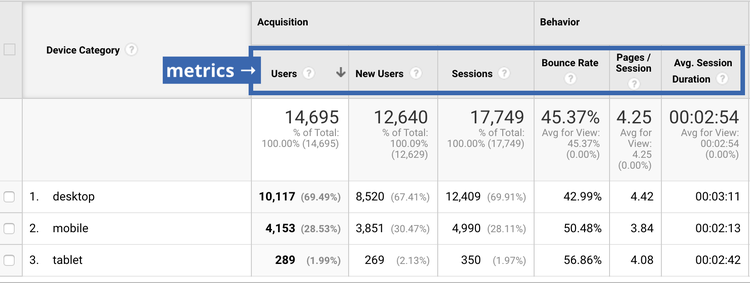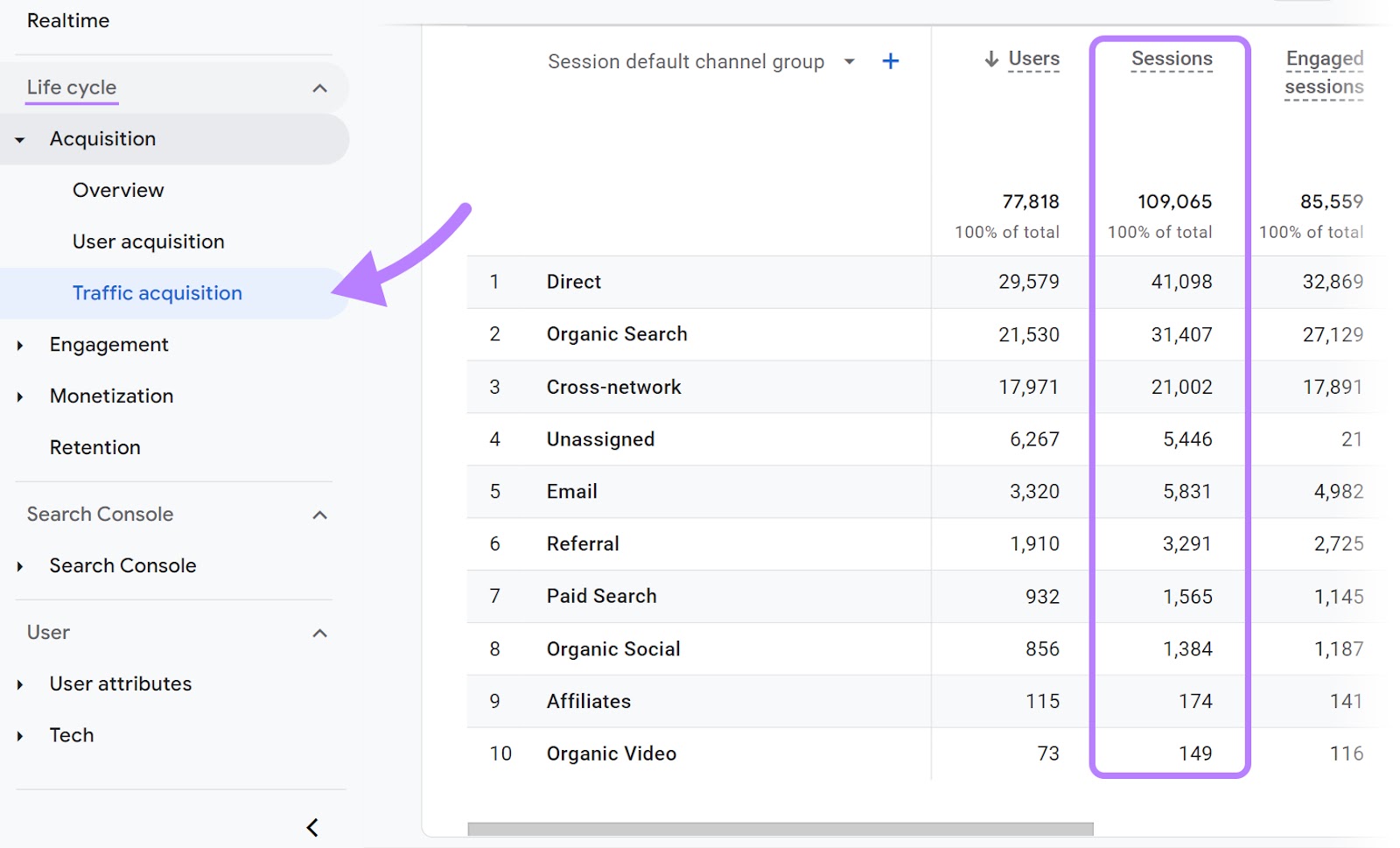Discovering What Is a "Metric" in Google Analytics: Interpretations, Instances, and Practical Uses
Discovering What Is a "Metric" in Google Analytics: Interpretations, Instances, and Practical Uses
Blog Article
Track Success Efficiently With the Most Essential Google Analytics Metrics
Understanding the nuances of Google Analytics metrics can be crucial in steering a service in the direction of success. By diving right into the core metrics such as target market demographics, website traffic sources, habits flow, conversion prices, and jump price, a wide range of insights awaits.
Target Market Demographics

Market data can aid businesses determine fads, preferences, and habits of their target audience. For example, knowing the age group that the majority of often visits an internet site can affect material development and item offerings. Recognizing the geographical locations of site visitors can aid in centering advertising campaigns and broadening into new markets. what is a “metric” in google analytics.
Additionally, target market demographics in Google Analytics can reveal valuable understandings regarding the efficiency of existing advertising and marketing efforts. By tracking changes in demographics in time, services can adapt their strategies to much better involve with their target audience. On the whole, leveraging audience demographic information in Google Analytics is necessary for services seeking to boost their on-line presence and drive success.
Website Traffic Sources
When taking a look at web site efficiency and user engagement, recognizing the resources of website traffic is critical for organizations seeking to enhance their online existence. By diving right into the traffic resources in Google Analytics, organizations can get important insights right into where their web site site visitors are originating from. This information categorizes website traffic right into networks such as natural search, straight, recommendation, social, and paid search.
Organic search traffic originates from search engine results, reflecting site visitors who found the site through a search inquiry. Referral web traffic comes from exterior web sites connecting to the site.
Analyzing these website traffic resources permits businesses to examine the performance of their advertising and marketing methods, identify areas for improvement, and allot sources sensibly. what is a “metric” in google analytics. By recognizing which channels drive one of the most traffic and conversions, businesses can tailor their advertising and marketing efforts to take full advantage of results and enhance overall performance
Habits Flow
Understanding the habits circulation of website visitors is necessary for organizations intending to improve customer experience and conversion rates. Behavior Circulation in Google Analytics gives a graph of how customers navigate via a website, revealing the course they extract from one page to another. By evaluating this data, businesses can identify popular web pages, drop-off points, and one of the most usual paths customers take. This understanding helps in optimizing the site navigation, web content, and design to boost customer involvement and ultimately drive conversions.

Conversion Fees
Measuring conversion rates is a vital element of evaluating the effectiveness of a web site in transforming site visitors into customers. what is a “metric” in google analytics. Conversion prices describe the percentage of site visitors who finish a desired action, such as purchasing, registering for an e-newsletter, or loading out a call type. By tracking conversion prices via Google Analytics, organizations can obtain beneficial understandings into the efficiency of their site and marketing techniques
Analyzing conversion rates allows organizations to identify which locations of their site succeed in driving conversions and which might require renovation. By recognizing the useful content variables that influence look what i found conversion prices, such as individual experience, material quality, and call-to-action effectiveness, companies can optimize their web site to increase conversions and eventually drive earnings.
Google Analytics supplies numerous devices and reports to track conversion prices, such as objective monitoring, ecommerce monitoring, and multi-channel funnels. By utilizing these attributes, organizations can monitor their conversion prices effectively and make data-driven choices to improve their online efficiency.
Bounce Price
To further gauge the engagement and performance of a site, examining the bounce rate is vital. The bounce price in Google Analytics refers to the portion of site visitors who navigate far from a site after viewing just one web page, as opposed to remaining to explore various other web pages within the exact same site. A high bounce rate can indicate that site visitors are not finding the content they expected, the website is tough to navigate, or the touchdown page does not align with the site visitor's intent. Comprehending the bounce rate can help website owners identify locations for renovation and optimize their site to motivate site visitors to remain longer and discover even more pages. By analyzing the bounce rate alongside various other metrics like time on web page and conversion rates, businesses can get useful insights into individual actions and make notified decisions to boost the overall performance and customer experience of their internet site. On a regular basis monitoring and dealing with factors adding to a high bounce price can lead to raised engagement, enhanced conversions, and ultimately, an extra effective on-line existence.
Final Thought
In verdict, understanding key metrics in Google Analytics such as target market demographics, web traffic sources, habits circulation, conversion rates, and jump rate is helpful resources important for tracking success successfully. Analyzing these metrics enables organizations to customize advertising methods, enhance customer experience, and boost content importance. By checking market changes, web traffic sources, actions circulation understandings, and bounce rates, services can make educated decisions to drive general success.
By diving right into the core metrics such as audience demographics, website traffic sources, habits flow, conversion rates, and bounce rate, a riches of understandings waits for. Comprehending the demographics of web site site visitors is crucial for companies to develop personalized content, enhance user experience, and boost conversion rates.
By tracking conversion rates with Google Analytics, services can acquire useful insights into the performance of their site and advertising techniques.
By analyzing the bounce rate together with other metrics like time on web page and conversion prices, businesses can get useful understandings into customer habits and make educated decisions to improve the general performance and customer experience of their web site.In final thought, understanding key metrics in Google Analytics such as target market demographics, web traffic sources, behavior flow, conversion prices, and bounce rate is essential for tracking success efficiently.
Report this page